 Every year humanity brings new discoveries, including archaeological.
Every year humanity brings new discoveries, including archaeological.
This year was no exception. Scientific research 2016, helped not only to lift the veil of secrecy over the events of antiquity, but also to rewrite some pages of history.
1. Ancient Chinese beer
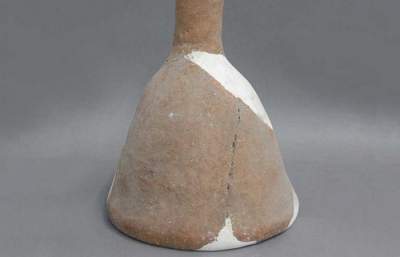
It has long been known that the ancient Chinese enjoyed a drink made from fermented rice, at least over 9000 years. However, in 2016, scientists learned that the Chinese were also lovers of beer. Archaeologists, leading excavations in Shaanxi province, found the equipment for beer production Dating back to 3400-2900 BC
Also, the vessels were found in the remains of an ancient beer ingredients, including broomcorn millet, seeds of the Lily, the grain called “tears of job” and barley. The presence of barley was particularly surprising, since previously it was thought that this culture began to spread in China 1000 years later.
2. Man and dog
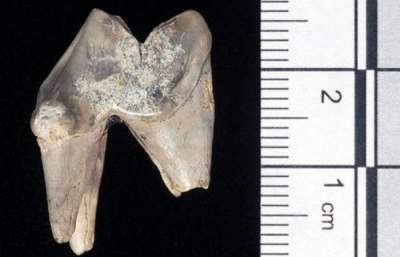
Dogs were man’s best friend and 7,000 years ago. Near Blick Mead (near Stonehenge) archaeologist David Jacques, found next to the skeleton of a hunter-gatherer Mesolithic tooth of the dog, which was found only in York. This man with his dog traveled 400 kilometers from York to Wiltshire, which is currently considered the oldest known journey in British history. Jacques claimed that the dog was domesticated and probably used for hunting.
3. Ethereal dagger of Tutankhamun
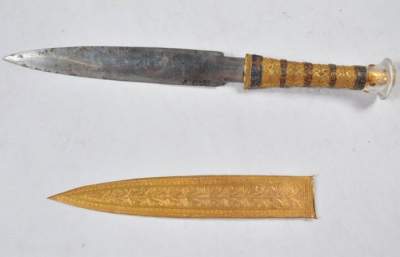
In the middle of 2016, scientists were able to unravel the mystery that has puzzled archaeologists since then, of how Howard Carter found Tutankhamen’s tomb in 1922. Among the many items buried with the young Pharaoh was a dagger of iron. It was very unusual for two reasons. First, in Egypt iron products 3300 years ago was incredibly rare. Secondly, the dagger is generally not rusty.
Study on a fluorescent spectrometer showed that the metal used for this dagger, had extraterrestrial origins. It was found high content of cobalt and Nickel, which was very similar to the composition of meteorites recovered from the red sea. In 2013 was tested by another iron artifact from ancient Egypt and it was also found meteoric iron.
4. Greek bureaucracy
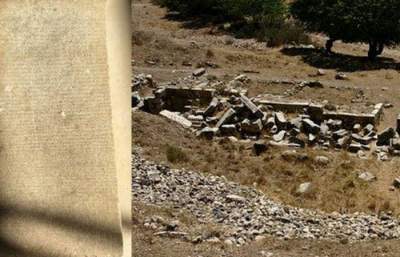
During the excavations of the ancient city of TEOS on the territory of modern Turkey has been found hundreds of tablets. One of them surprisingly intact preserved 58 lines of text that constitute the 2200-year lease. This proves that the bureaucracy was so much a part of ancient Greek society as modern.
The document describes a group of schoolboys who inherited a plot of land (complete with buildings, altar, and slaves), and then rented it at auction. In the official document also referred to the guarantor (in this case, the father of the tenant) and witnesses from the city administration. The owners have kept the privilege of the use of land for three days a year, and has also reserved the right to annual inspections to ensure that tenants have caused damage to property.
5. Sexually transmitted diseases the Neanderthals

A few years ago, when scientists researched the human genome, they were surprised to find that modern humans have about 4% Neanderthal DNA due to inter-species breeding. Also, our ancestors got something else from their cousins-the Neanderthals – primitive version of the human papillomavirus (HPV). Using statistical modeling, the scientists were able to recreate the evolutionary stages of the virus HPV16.
When modern humans and Neanderthals was divided into various types, the virus is also divided into two separate strain. Initially, the virus HPV16A were only Neanderthals and Denisovsky person. When people migrated from Africa, they carried only the strains B, C, and D. However, when they reached Europe and Asia and began to have sex with Neanderthals, they also passed on the strain HPV16A.
6. Dead languages
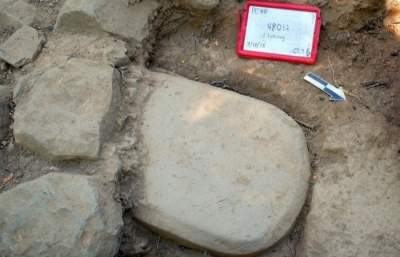
Despite the fact that no one used it for nearly 2000 years, Etruscan remains one of the most intriguing of the dead languages. He is most influenced by Latin, which, in turn, influenced many European languages, spoken still. However, today there are very few specimens of Etruscan texts more or less considerable duration. However, in 2016, the archaeologists during excavations of the temple in Tuscany found a 1.2-meter 2500-year-old stone stele, covered with inscriptions of the Etruscans.
It is well preserved because it was reused as a Foundation for the temple. The inscription on it has not yet been deciphered, but scientists suspect that a religious text can shed new facts about Etruscan religion.
7. The elusive Higgs bison
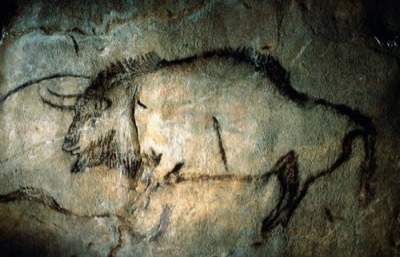
In 2016, using a unique method (the study of ancient cave art) found a new kind of animal. Researchers have studied the rock paintings from caves at Lascaux and Percocet and noticed a few changes between bison, painted 20,000 years ago and 5,000 years later. They have slightly different torso was a completely different horn. As earlier paintings reminded steppe bison, scientists thought that the new figures show a completely different species.
To confirm their hypothesis, they examined the DNA of bones and teeth of bison age of 22000 and 12000 years. Scientists came to the conclusion that is drawn later, the bison was a new species, which evolved from the steppe bison and the bison. It was called Buffalo Higgs (by analogy with the Higgs boson).
8. The first right-handed
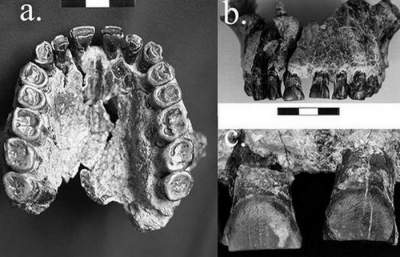
A new study published in the journal of Human Evolution, provides evidence of the first documented example of preporuciti the hominids (and it was not Homo sapiens). Paleoanthropologist David Freyer found evidence of this phenomenon in Homo habilis, which lived 1.8 million years ago. The researchers examined fossil teeth of Homo habilis and found the specific abrasion is a sign of the use of tools, which he held in his right hand.
9. Mysterious human ancestor

New discoveries on the Indonesian island of Sulawesi, suggest that there once lived a yet unknown species of hominid. Archaeologists found hundreds of stone tools, which was, at least 118,000 years. Nevertheless, all data indicate that modern humans first arrived on the island 50 000 — 60 000 years ago. The existence of a new species of hominid is very plausible. Sulawesi is located near the island of Flores. In 2003 archaeologists have discovered another species of hominid, called Homo floresiensis (man Florensky), and the people called him “hobbit”. This species evolved independently on Flores, before finally disappeared 50 000 years ago.
10. Hemp path

Modern scholars suggest that in ancient China about 10,000 years ago first began to be used and possibly cultivated cannabis. However, the Free University of Berlin has recently collected a database of all the available archaeological evidence of cannabis and found that in Eastern Europe and Japan, the use of cannabis has evolved around the same time as in China. In addition, cannabis use in Western Eurasia remained unchanged for many years, and then increased in the bronze age. Scientists suggest that cannabis by this time has become a commodity market and spread throughout Eurasia.








